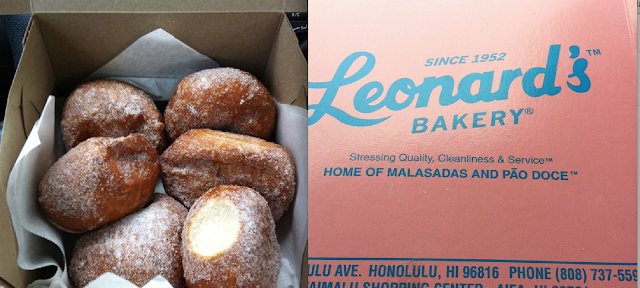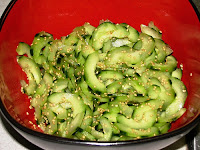I've been sitting on this post for a couple weeks now because I've been busy with work and other things, but today I finally have time for it. Sorry for the delay but I hope you enjoy this!
So a few weeks ago I saw an article on CNN about Anthony Bourdains new show, Parts Unknown. The article had a falafel recipe but showed a short clip, from the episode, where Anthony was treated to a Palestinian dish called Maqloobeh. It was basically a complete meal cooked in layers within a single pot, then dumped onto a platter for serving. It looked amazing and I have a liking for Middle Eastern food, so I had to try it! Here's a link to the article that inspired me.
I had to do a bit of creative research to find out the name of the dish since I didn't actually listen to the audio of the clip and I was too lazy to go back and watch it again to hear if they ever named it. Apparently there are many different spellings to "Maqloobeh," and various Middle Eastern cultures have their own variations of the recipe. Much of the spices and seasonings used are fairly the same in each recipe, with slight changes here or there, but after I scoured through several recipes, I decided to mix and match the recipes to create my own version. I do this mix-n-match technique to a lot of recipes that I haven't tried before, mainly because it's difficult to find authentic/original recipes now days. I also have a very huge flavor pallet and can usually taste mixed flavors (in my head) as I see them in recipes.
So please keep in mind, the following recipe is not entirely authentic. It is my own creation based on various versions of Maqloobeh found on the web. Also, see my note below the recipe for additional changes from the original recipe.
Ingredients:
- 4-6 chicken pieces (bone-in drumsticks and thighs)
- 1 onion, chopped
- 1 head of cauliflower, cut to bite sized pieces or slightly larger
- 3-4 potatoes, sliced to 1/2 inch thick rounds
- 3 cups long grain rice (can substitute with any preferred grain of rice)
- 5 cups water
- 4 whole cardamom pods
- 4 whole cloves
- 1 stick cinnamon
- 1/2 tblsp. garam masala
- 1 tblsp. turmeric
- salt & pepper, to taste
- 2 tblsp. oil
- oil, for deep frying
- 2 halved and roasted tomatoes for garnish (optional)
Preparation:
- Fill a large frying pan, or pot, about 1/2 inch with oil at medium-high heat. Fry potatoes and cauliflowers (separately) until golden then set aside and drain.
- In a large pot, add 2 tblsp. of oil and add chopped onions and sauté, about 2 mins, then add all spices and seasonings.
- Add chicken and water. Cover then bring to a boil and simmer for 30-40 minutes, until chicken is cooked through.
- Taste broth and add salt if needed.
- Add cauliflower, evenly spread out, and then add potatoes, also evenly spread out.
- Pour raw rice evenly into the pot then cover and simmer for approximately 20 mins, until rice is cooked.
- Place a large platter upside down and over the pot and flip the pot and platter over, dumping the contents of the pot onto the platter.
- Add roasted tomato garnish and serve.
Note: Almost all Maqloobeh recipes called for eggplant, insisting that it is a MUST, but my roommate despises eggplant so I did not include it in my recipe. You will also have to adjust the water quantity accordingly, depending on the grain of rice you use. Short grain rice usually use a 1 to 1 ratio, where longer grains require nearly, if not more than, a 2 to 1 ratio (1 cups water to 1 cup rice). I usually add just a tad bit more than required to adjust for evaporation when boiling (even when covered, some water loss occurs).
When I made this, it was my first attempt and I had some guest over to try it. It turned out amazing and my friends really enjoyed it. In fact, two of my friends, who are brothers, took some of it home and their mother tried it. She took us out to Dim Sum a couple weeks later but raved about it during our meal! About a week after making the original dish, I made it again for my friends Rory and Olma. They too raved about it. Overall it was a successful test run at a cool and tasty recipe!
In short, trying something new always seems risky, but how else are you going to expand your flavor awareness unless you go out and explore?! Even if you fail horribly at a new recipe, I'm sure you'll learn something new in the process.
Try this recipe and tell me what you think! Or try a completely new recipe and tell me how it went! =)
Peace & Poi,
Dis Hungry Hawaiian









































